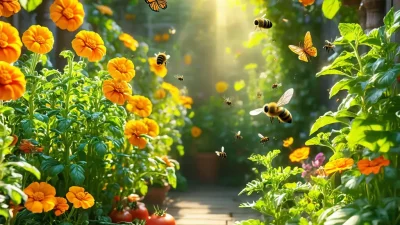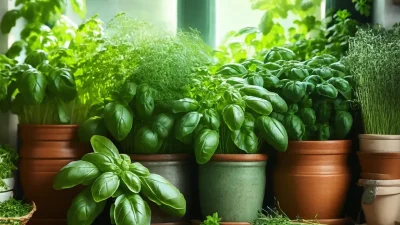How to Create a Sustainable Garden: Tips for an Eco-Friendly Outdoor Space
Gardening is more than just a hobby; it’s a chance to connect with nature and make a positive impact on the environment. Creating a sustainable garden not only benefits your plants but also supports local wildlife and reduces your carbon footprint. In this blog, we’ll explore practical steps you can take to build an eco-friendly garden that thrives year-round.
1. Plan Your Garden with Sustainability in Mind
Before you start digging, take time to plan your garden strategically. Consider the layout, sunlight patterns, and water needs of your plants. A well-thought-out design can minimize waste and maximize efficiency. Here are some tips:
- Choose native plants: These are naturally adapted to your local climate and require less water and pesticides.
- Companion planting: Grow plants together that benefit each other, like marigolds repelling pests or tomatoes providing shade for basil.
- Utilize vertical space: Install trellises or hanging planters to save ground space and grow more in less area.
2. Water Wisely
Water is a precious resource, so it’s essential to conserve it in your garden. Here are some water-saving tips:
- Rainwater harvesting: Install a rain barrel to collect water for irrigation.
- Drip irrigation: This method delivers water directly to the roots, reducing evaporation and runoff.
- Mulching: Apply organic mulch around plants to retain soil moisture and suppress weeds.
For more information on efficient watering methods, check out the EPA’s WaterSense program.
3. Enrich Your Soil Naturally
Healthy soil is the foundation of a thriving garden. Instead of using synthetic fertilizers, try these natural methods:
- Composting: Turn kitchen scraps and yard waste into nutrient-rich compost.
- Green manure: Plant cover crops like clover or legumes to add organic matter to the soil.
- Worm farming: Use worms to break down organic material, producing a potent soil amendment called worm castings.
4. Attract Beneficial Wildlife
Your garden can be a haven for pollinators and other beneficial insects. Here’s how:
- Plant flowers for bees and butterflies: Include nectar-rich plants like lavender, sunflowers, and coneflowers.
- Create habitats: Add a small pond or birdbath to provide water for wildlife. Install insect hotels for bees and ladybugs.
- Avoid pesticides: Let nature do the work by attracting predators like birds and ladybugs to control pests naturally.
Learn more about supporting pollinators at The Xerces Society.
5. Use Recycled Materials
Sustainable gardening isn’t just about plants; it’s also about reducing waste. Repurpose materials you already have:
- Repurpose containers: Use old buckets, cans, or even shoes as planters.
- Recycled mulch: Shredded newspaper or cardboard can be used as a weed-suppressing mulch layer.
- Eco-friendly furniture: Choose outdoor furniture made from recycled materials for your garden space.
6. Go Solar
Incorporate solar-powered lighting and gadgets into your garden to reduce energy consumption. Solar lights are easy to install, cost-effective, and environmentally friendly.
7. Seasonal Gardening
Plant seasonal crops that thrive in your local climate. This reduces the need for additional heating or cooling and ensures you’re growing food at optimal times.
“Sustainable gardening is a journey, not a destination. Every small step counts towards creating a healthier planet.”
Conclusion
Creating a sustainable garden is a rewarding way to contribute to environmental conservation while enjoying beautiful and productive outdoor spaces. By implementing these tips, you can make your garden eco-friendly and create a haven for yourself and nature alike.
For more gardening resources, visit USDA’s Plant Database for selecting native species and The Spruce for detailed guides on organic gardening practices.





